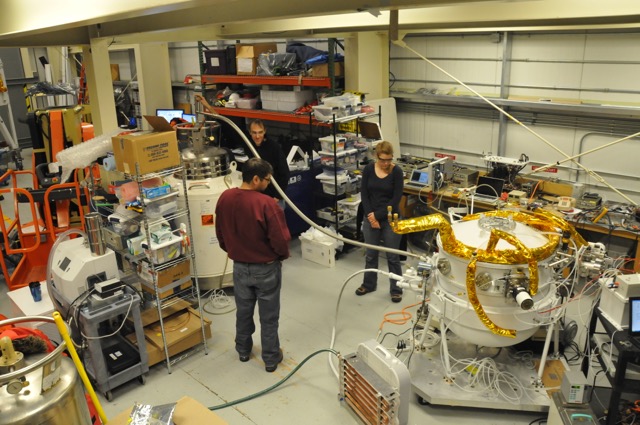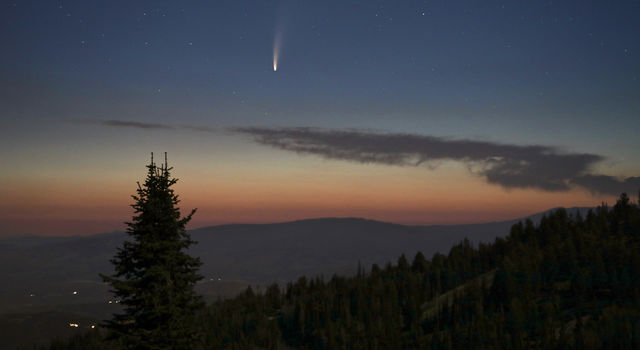Blogs | Southern Exposure | November 18, 2015
Helium Fill and Instrument Update
The instrument I came to Antarctica to work on, the Stratospheric Terahertz Observatory II (STO-2), in the most basic terms is designed to study how stars are born. Although I'll avoid getting too technical on most of my posts here, this entry will be on the more technical side to provide an update to my colleagues back at JPL and around the world.
STO-2 uses superconducting mixers, which requires cooling it to below 9 K (that's -443 degrees F). In order to achieve this temperature, we first "precool" our cryostat to 77 K (-321 degrees F) using liquid nitrogen, and then cool using liquid helium to 4 K (-452 degrees F). The whole process takes about 48 hours.
Today, we finished the helium fill. I participated in the fill, but you cannot see me in the picture above because I was behind the shelves on the left.
The transfer occurs from a 500 L liquid helium storage Dewar (yes, as in James Dewar, the scotch-maker -- he made whiskey to support his science habit) to the 100 L liquid helium tank on the STO-2 instrument on the right.
Although it takes about 24 hours after the fill is complete to cool everything inside the cryostat to 4 K, it was cold enough after an hour to confirm that we have five live mixers with superconducting currents! We also have five local oscillator channels working! There is still much work to be done, but overall this is a very positive sign that we are on our way to a successful mission!
TAGS:STO-2, ANTARCTICA, MCMURDO, ASTRONOMY, ASTROPHYSICS, BALLOONING







